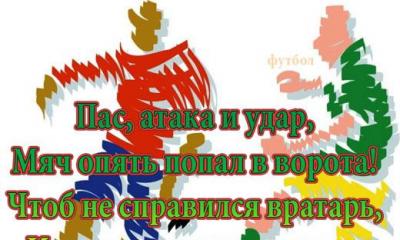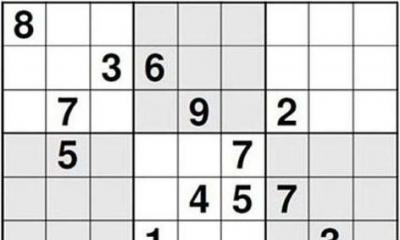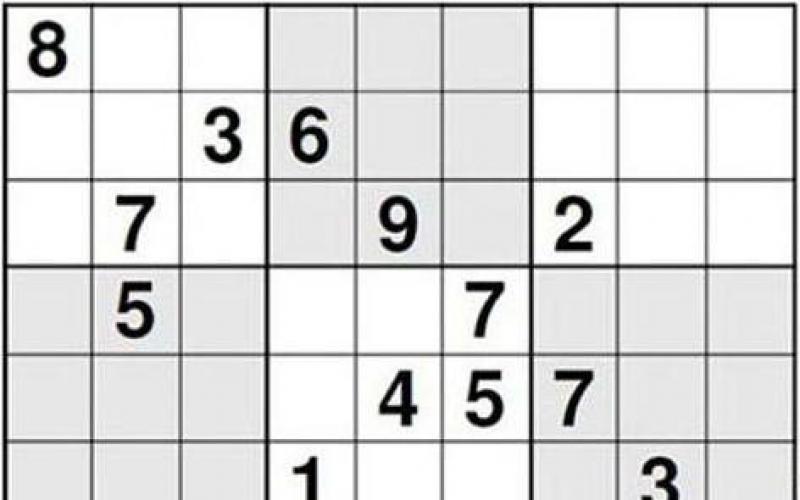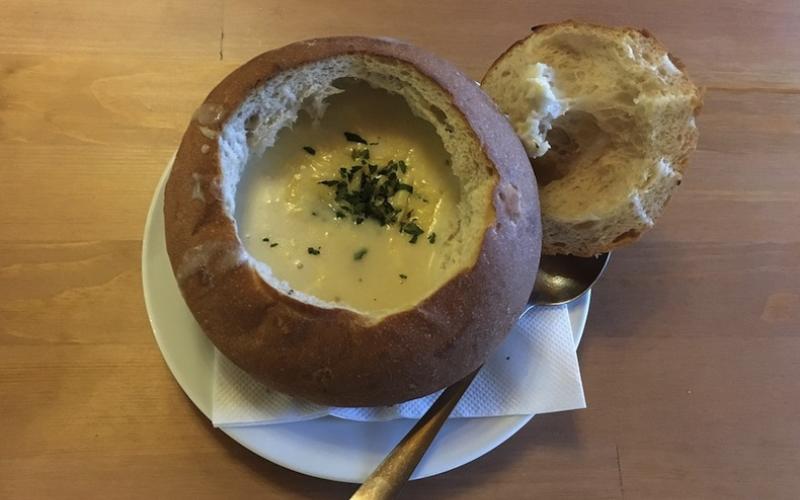The cross is a very ancient symbol. What did he symbolize before the death of the Savior on the cross? Which cross is considered more correct - Orthodox or Catholic four-pointed ("kryzh"). What is the reason for the image of Jesus Christ on the cross with crossed feet among Catholics and separate feet in the Orthodox tradition.
Hieromonk Adrian (Pashin) answers:
In different religious traditions, the cross symbolized different concepts. One of the most common is the meeting of our world with the spiritual world. For the Jewish people, from the moment of Roman rule, the cross, the crucifixion was a method of shameful, cruel execution and caused overwhelming fear and horror, but, thanks to Christ the Victor, it became a welcome trophy that evoked joyful feelings. Therefore, Saint Hippolytus of Rome, an Apostolic man, exclaimed: “And the Church has her own trophy over death - this is the Cross of Christ, which she bears on herself,” and Saint Paul, the Apostle of tongues, wrote in his Epistle: “I want to boast ... only by the cross of our Lord Jesus Christ” (Gal. 6:14).
In the West, the most common now is the four-pointed cross (Fig. 1), which the Old Believers call (for some reason in Polish) “Kryzh Latin” or “Rymsky”, which means the Roman cross. According to the Gospel, the execution of the cross was distributed throughout the Empire by the Romans and, of course, was considered Roman. “And not according to the number of trees, not according to the number of ends, the Cross of Christ is revered by us, but according to Christ Himself, Whose holy blood was stained with,” says St. Dmitry of Rostov. “And manifesting miraculous power, any cross does not act by itself, but by the power of Christ crucified on it and by the invocation of His most holy name.”
Starting from the III century, when such crosses first appeared in the Roman catacombs, the entire Orthodox East still uses this form of the cross as equal to all others.
The eight-pointed Orthodox cross (Fig. 2) most closely matches the historically reliable form of the cross on which Christ was already crucified, as Tertullian, St. Irenaeus of Lyons, St. Justin the Philosopher and others testify. “And when Christ the Lord carried a cross on His shoulders, then the cross was still four-pointed; because there was still no title or footstool on it. There was no footstool, because Christ had not yet been raised on the cross, and the soldiers, not knowing where Christ's feet would reach, did not attach footstools, finishing it already at Golgotha" (St. Dimitry of Rostov). Also, there was no title on the cross before the crucifixion of Christ, because, as the Gospel reports, first they “crucified Him” (John 19, 18), and then only “Pilate wrote an inscription and placed it on the cross” (John 19, 19 ). It was at first that the warriors “crucified Him” (Mt. 27:35) divided “His clothes” by lot, and only then “they placed an inscription over His head, signifying His guilt: This is Jesus, the King of the Jews” (Mt. 27, 37).
Since ancient times, images of the crucifixion of the Savior have also been known. Until the 9th century inclusive, Christ was depicted on the cross not only alive, resurrected, but also triumphant (Fig. 3), and only in the 10th century did images of the dead Christ appear (Fig. 4).
From ancient times, crucifixion crosses, both in the East and in the West, had a crossbar to support the feet of the Crucified, and His feet were depicted as nailed each separately with their own nail (Fig. 3). The image of Christ with crossed feet, nailed with one nail (Fig. 4), first appeared as an innovation in the West in the second half of the 13th century.
From the Orthodox dogma of the Cross (or Redemption), the idea undoubtedly follows that the death of the Lord is the ransom of all, the calling of all peoples. Only the cross, unlike other executions, made it possible for Jesus Christ to die with outstretched arms calling "to all the ends of the earth" (Isaiah 45:22).
Therefore, in the tradition of Orthodoxy, it is to depict the Savior Almighty precisely as the already Resurrected Crusader, holding and calling into His arms the whole universe and carrying the New Testament altar - the Cross.
And the traditionally Catholic image of the crucifixion, with Christ sagging in his arms, on the contrary, has the task of showing how it all happened, depicting dying suffering and death, and not at all what is essentially the eternal Fruit of the Cross - His triumph.
Orthodoxy invariably teaches that suffering is necessary for all sinners for their humble assimilation of the Fruit of Redemption - the Holy Spirit sent by the sinless Redeemer, which, out of pride, Catholics do not understand, who, with their sinful sufferings, seek participation in the sinless, and therefore redemptive Passion of Christ and thereby fall into the heresy of the Crusades. "self-rescue".
The most frequent question, which just as often remains unanswered: “How is it different from the Orthodox?” A non-religious person is unlikely to understand the difference: often such crosses are very similar in appearance, and they are worn the same way. But not everything is as difficult as it might seem. To learn to distinguish between them, it is not necessary to delve into religious knowledge. It is enough to know only 5 important details!
Orthodox and Catholic cross: from a sacred symbol to an elegant decoration
A silent symbol of faith or an exquisite piece of external decoration? Rather, both the first and second. The versatility of performance techniques is a clear confirmation that the meaning of the Christian cross in modern world quite extensive. worn by religious people, and those who are far from the church; masters clothe it in magnificent forms, or do it in strict accordance with church canons.
Over the past ten years, they have become firmly established in jewelry, turning from a religious symbol into an exquisite luxury item. To some extent, this was facilitated by the collections of famous brands Dolce & Gabbana (autumn-winter 2013), Tiffany & Co, who began to actively use cross-shaped hangers in clothes / accessories.
The shape of the cross is the first and main difference
If suddenly you are asked how the Orthodox cross differs from the Catholic one, you will surely begin to recall the ritual and dogmatic differences between the two largest branches of Christianity. And there are many differences, and the first main one is the shape of the cross.
In modern Christianity, the most common: quadrangular, six; - eight-pointed cross. The first refers to the Western tradition. Orthodoxy has more choices. Here cruciform suspensions can be of all three forms.
A cross with six ends has two horizontal crossbars, and with eight ends it also has an oblique lower one. The lower one personifies the sinfulness of a person, which pulls him down, and the upper one - his purification by repentance.
The Catholic cross is outwardly simpler, there are no unnecessary details in it. As a rule, it is a quadrangular shape.

quadrangular cross
According to legend, Jesus was crucified on such a cross. The four-pointed cross is a classic of Catholicism. But the eastern brothers consider it equivalent to everyone else.
six pointed cross
The figure with six ends has an additional crossbar (at an angle), which symbolizes the cup of sins. The lower end is the heaviness from non-repentance, and the upper end is relief in repentance, which opens the way to the Kingdom of Heaven.
For Catholics, the cross is an indicator of the dignity of a priest. A cross with six ends is an attribute of the power of archbishops, and with eight - of the Pope.
eight pointed cross
The image of Jesus on such a cross is found in Roman burials as early as the 3rd century. Above the middle, longest crossbar, there is a short one, and under it a small oblique one - this is what an Orthodox cross with eight ends looks like.
The eight ends symbolize the eight periods in the development of mankind, the last of which is the path to the spiritual realm. The upper end on the cross is the way up to the eternal kingdom opened by Christ.
Differences between the Catholic and Orthodox cross symbol
For Orthodoxy, the shape of the cross is not as important as what is written / depicted on it. Having carefully studied the inscriptions on, one can say with complete certainty to which trend of Christianity the product belongs.
inscriptions
A tablet with an inscription fixed above the head of Christ is present on both crosses. And even the inscription on it, which, in theory, should describe the transgression of Jesus, is the same. Pontius Pilate, condemning the Son of God, did not find his real guilt, and the tablet reads: "Jesus of Nazareth, King of the Jews."
The easiest way to determine which cross is in front of you is to look at the inscriptions on Orthodox / Catholic pectoral crosses.
Until now, this inscription with an initial abbreviation is engraved on pectoral crosses. In Orthodox in Slavonic I.Н.Ц.I., in Catholic in Latin INRI. And yet, on Orthodox crosses with reverse side the expression "Save and save" can be engraved, there is nothing like this on Catholic ones.

Image
One of the most controversial differences is the depiction of the image of Christ. On the Catholic pectoral cross, Jesus is shown suffering: with wounds and flowing blood, in a crown of thorns, with his head bowed and his eyes closed. His palms are clenched into a fist, and his legs are crossed and nailed. So he should remind Christians of the price he paid for the salvation of people.
The main message of Orthodox crucifixion is not in physical suffering, but in the triumph of resurrection (the palms of Jesus are turned towards people), in victory over death, the Spirit over the body.
On Orthodox crosses, Christ's legs are not crossed, but nailed with two nails, each separately.
The crucifix of the Catholics protrudes above the surface, while the Orthodox have a flat appearance.
It is customary for Christians to wear a cross under, and not over, clothing, since it is considered a personal amulet for each believer. According to churchmen, if the cross is important as a symbol of faith, it should not be shown to others.
Location of Christ
If you look closely at the figure of Christ, you can see another important detail. On the Orthodox crucifix, each of his legs is nailed separately, while on the Catholics they are crossed together.

Number of nails
If the feet of the Savior are nailed to the post with two nails - an Orthodox cross.
The Catholic Church has a fundamentally different opinion and its own shrine - three nails stored in the Vatican. Accordingly, on the Catholic crucifixion, the feet of Jesus are superimposed on one another and nailed with only one nail.
The history of the split
The split between Catholics and Orthodox is more than a thousand years old, and officially dates back to 1054. Among the reasons are ecclesiastical disagreements on political and canonical grounds.

Roman ministers aspired to lead the Christian world, while the Byzantines resisted admitting this. In addition, the Western clergy advocated "for" updating the church doctrine, while the Eastern brethren considered any deviation from the first dogmas of the ecumenical councils a sin.
Today, churchmen count 49 such distinctions, many of which are not only theological, but also external in nature. For example, Catholics, unlike the Orthodox, believe in the immaculate conception of Christ and Mary, cross themselves with a pinch of fingers from left to right, and also do not recognize iconostases.
The choice of crosses in the Jewelery Map network
Our jewelry collection contains more than 100 models of Catholic and Orthodox crosses in a combination of different types of gold, as well as with elegant inlay and floral patterns. All models, as well as women's, are distinguished by accuracy of execution, which will allow you to purchase the product as a significant attribute of faith and exquisite jewelry.

Additional inserts made of precious stones make the products brighter and more modern in appearance.
All crosses (for adults and children) can be viewed in the catalog on the site (with detailed description characteristics). Elegant chains of white/yellow/red aurum make a harmonious ensemble for the cross.
Among the many models, you will certainly find your precious talisman!
Of the many different currents of Christianity, only Orthodox and Catholics revere icons and crosses. Crosses serve to decorate church domes, residential buildings, and are worn around the neck. Protestants do not recognize this symbol - the cross. They perceive it as a symbol of execution, an instrument with which Jesus suffered great suffering and death.
The reason for wearing a pectoral cross is different for everyone. Some in this way are simply trying to match fashion, others use it as a beautiful piece of jewelry, others consider it a talisman. However, for many, the cross, which was first put on during the rite of baptism, serves as a real symbol of sincere faith.
It is known that the cause of the cross was the martyrdom of Jesus, accepted by him according to the verdict, which Pontius Pilate was forced to pass. It was a popular method of execution in the ancient Roman state, which the Romans borrowed from the Carthaginians (it is widely believed that it was the Carthaginians who first began to use crucifixion). Most often, robbers were sentenced to execution in this way; many early Christians who were persecuted in the Roman Empire were also executed on the cross.
Before Jesus, the cross was a means of shameful execution. However, after His death, it turned into a symbol of the victory of life and good over death and evil, a reminder of the boundless love of the Lord, whose Son sanctified the cross with His blood, making it a means of grace and sanctification.
The Orthodox dogma of the Cross (also called the dogma of the Atonement) implies that the death of Jesus is a ransom for all people, a calling for all mankind. The cross differs from execution in any other way in that it allowed the Savior to die with his hands spread apart, as if calling people from all over the earth.
When reading the Bible, one can be convinced that the feat of Christ is the main episode of His life on earth. His sufferings on the Cross made it possible to wash away his sins, to cover the debt of people before the Lord - to redeem (that is, redeem) them. Calvary contains the incomprehensible mystery of the Creator's love.
So, the Catholic cross is the Orthodox cross - what is the difference between them?
The cross is one of the symbols of the Christian religion. Representatives of the Catholic and Orthodox movements especially revere him. But what is the difference between the Orthodox and Catholic symbols of Christianity, many believers will not be able to say.
Catholic and Orthodox cross: are there any differences in form
In the minds of the majority of the inhabitants, there are Catholic and Orthodox crosses, which must be worn by representatives of a particular denomination.
Differences between images of Catholic and Orthodox crosses
This statement has nothing to do with reality, since both Catholics and Eastern Christians can use different forms of crosses. There are three types in total:
- four-pointed;
- six-pointed;
- eight-pointed.
All these symbols represent cleansing from sins through suffering and hope for resurrection in the future.
Read about the cross in Orthodoxy:
four-pointed cross
This form of the main Christian symbol is the most ancient. It was on such a cross that the Savior was crucified, and his image is found in the early Christian catacombs.
This type is most common in Western Christianity, but in the eastern branch of the Christian religion it is considered equivalent to all other varieties of the holy symbol.
six pointed cross
The figure with six ends has an additional crossbar. Among Eastern Christians, an additional crossbar is located under the main horizontal part and means "measurement of sins." The left side, pointing down, symbolizes unrepentant sin. The right part, tending upwards, is a symbol of repentance and repentance.
Interesting: in the Catholic Church, a six-pointed cross is an indicator of the place of a clergyman in the church hierarchy. This attribute is used by priests in the rank of archbishop.
eight pointed cross
In Russian and Serbian Orthodox churches the most widespread was the eight-pointed figure. She is considered the closest to the structure on which the Son of God died.
 The eight-pointed cross is considered protection from evil spirits and evil spirits.
The eight-pointed cross is considered protection from evil spirits and evil spirits.
In addition to the footrest, denoting the "measurement of sins", in the upper part of the cross there is a short crossbar, which symbolizes the tablet on which Pontius Pilate wrote "Jesus the Nazarene, King of the Jews." These words replaced the accusation, which the people who judged Christ could not formulate.
Interesting: in the Catholic Church, an eight-pointed cross is an attribute of the power of the Pope. Additional elements are placed above the main crossbar.
The difference between the Catholic and Orthodox cross symbol
Their main difference lies in the image and inscriptions. Having carefully studied them, one can say with almost complete certainty to which current of Christianity this subject belongs.
inscriptions
You can determine the belonging of an object by the inscription in its upper part. In the Latin version, the abbreviation of the words "Jesus of Nazarene, King of the Jews" is as follows "INRI". On the Eastern Christian cross there can be inscriptions of two types: IHHI or IHЦI. In addition to this abbreviated inscription, it has the following letters:
- IC XC - Jesus Christ;
- TS - King of Glory;
- NK - NIKA, which means winner.
Only the Orthodox Christian symbol on reverse side there is an inscription "Save and save".
Image
The greatest differences are observed in the image of the figure of the Savior. The Orthodox image depicts the Son of God, who conquered death. His hands are spread out to the sides with open palms. It seems that Jesus embraces all people. The head is surrounded by a halo, and the eyes are open. Feet stand on the bar, or nailed one at a time to the vertical part.
Read about Christ:
 Most often, Catholics depict a four-pointed cross.
Most often, Catholics depict a four-pointed cross.
The Catholic depiction of Christ is more realistic. The figure literally hangs on a cruciform structure, nailed to it with three nails. A crown of thorns is put on his head, from under which blood flows onto his face. Wounds are visible on other parts of the body. The eyes on his drooping head are always closed.
You should know that the crucifixion among Eastern Christians has a flat appearance, while among Catholics it protrudes above the surface.
The emergence of differences
Officially, a split in the Christian church occurred in the middle of the 11th century. But already by this time there were noticeable differences in appearance clergy, temple architecture, rituals and appearance of church utensils. Over time, this split intensified, and its apogee was the events that occurred in 1054, when the heads of the Eastern and Western Christian churches anathematized each other.
Significance for Christians
One of the main symbols of the Christian faith, Catholics and Orthodox revere as a symbol of the victory of the Son of God over death and hope for eternal life. He protects from evil forces and patronizes in good undertakings. The priest, putting on a pectoral cross on a person at baptism, gives it to the power of the Lord. Believers wear this object on their bodies as an indicator of belonging to Christianity and a reminder of the great sacrifice of the Savior, who atoned for the sins of people with his martyrdom.
The difference between the Catholic and the Orthodox cross lies in the image, which can be placed on any form. It is quite easy to distinguish between them, but it must be remembered that any cross reminds people of the trials endured by Jesus for the sake of mankind. The truth of faith is determined not by external attributes, but by the purity of thoughts and the desire to live according to the commandments of the Lord.
What is the difference between an Orthodox cross and a Catholic one?
In the Catholic and Orthodox tradition, the cross is a great shrine to the extent that it was on it that the Most Pure Lamb of God, the Lord Jesus Christ, suffered torment and death for the salvation of the human race. In addition to the crosses crowning Orthodox churches and Catholic churches, there are also body crucifixes that believers wear on their chests.
There are several differences between pectoral Orthodox crosses and Catholic ones, which have been formed over the course of several centuries.
In ancient Christian Church In the first centuries, the shape of the cross was predominantly four-pointed (with one central horizontal bar). Such forms of the cross and its images were in the catacombs during the persecution of Christians by the Roman pagan authorities. The four-pointed form of the cross still remains in the Catholic tradition. The Orthodox cross is most often an eight-pointed crucifix, on which the upper crossbar is a tablet on which the inscription: "Jesus of Nazarene King of the Jews" was nailed, and the lower beveled crossbar testifies to the repentance of the robber. Such a symbolic form of the Orthodox cross indicates the high spirituality of repentance, which makes a person worthy of the kingdom of heaven, as well as heart hardness and pride, which entails eternal death.
In addition, six-pointed forms of the cross can also be found in. In this type of crucifix, in addition to the main central horizontal, there is also a lower beveled crossbar (sometimes there are six-pointed crosses with an upper straight crossbar).
Other differences include images of the Savior on the cross. On Orthodox crucifixes, Jesus Christ is depicted as God who conquered death. Sometimes on the cross or icons of suffering on the Cross, Christ is depicted alive. Such an image of the Savior testifies to the Lord's victory over death and the salvation of mankind, speaks of the miracle of the resurrection that followed the bodily death of Christ.
Catholic crosses are more realistic. They depict Christ, who died after terrible agony. Often on Catholic crucifixes, the hands of the Savior sag under the weight of the body. Sometimes you can see that the fingers of the Lord are bent, as it were, into a fist, which is a plausible reflection of the consequences of nails driven into the hands (on Orthodox crosses, the palms of Christ are open). Often on Catholic crosses you can see the blood on the body of the Lord. All this focuses on the terrible torment and death that Christ endured for the salvation of man.

Other differences between Orthodox and Catholic crosses can be noted. So, on Orthodox crucifixes, Christ's feet are nailed with two nails, on Catholic ones - with one (although in some monastic Catholic orders until the 13th century there were crosses with four nails instead of three).
There are differences between Orthodox and Catholic crosses in the inscription on the top plate. "Jesus the Nazarene King of the Jews" on Catholic crosses with an abbreviation in the Latin manner - INRI. Orthodox crosses have an inscription - IHЦI. On Orthodox crosses on the halo of the Savior, the inscription of Greek letters denoting the word "Being":

Also on Orthodox crosses there are often inscriptions "NIKA" (denoting the victory of Jesus Christ), "King of Glory", "Son of God".







